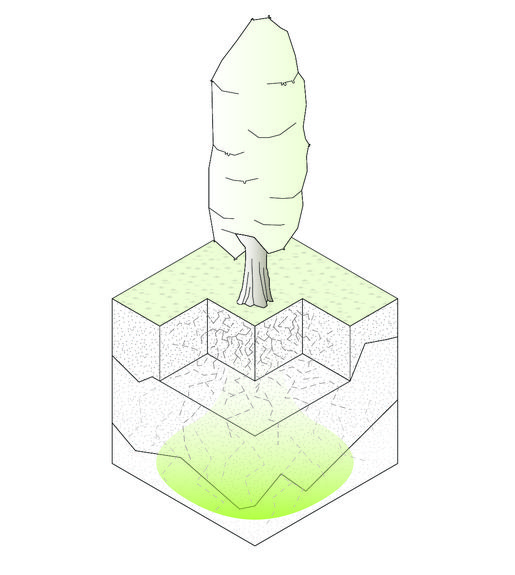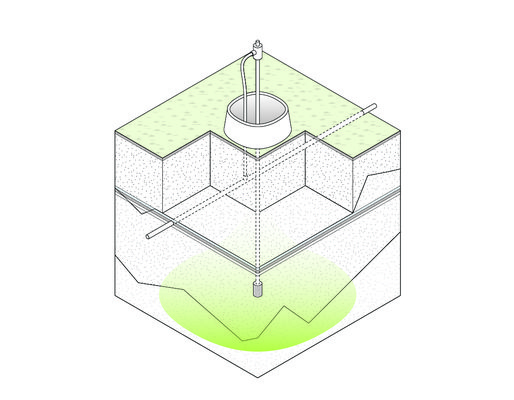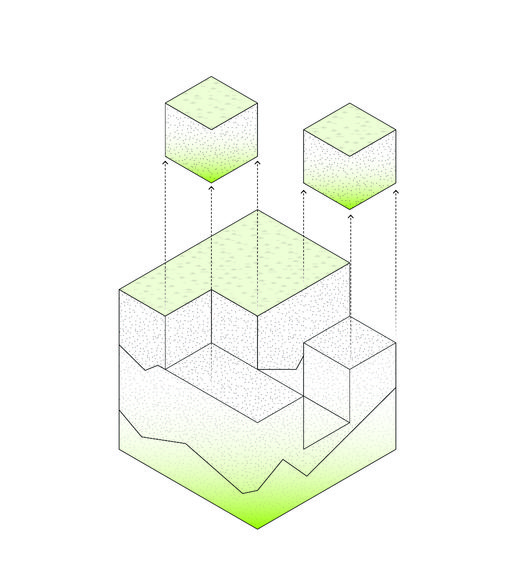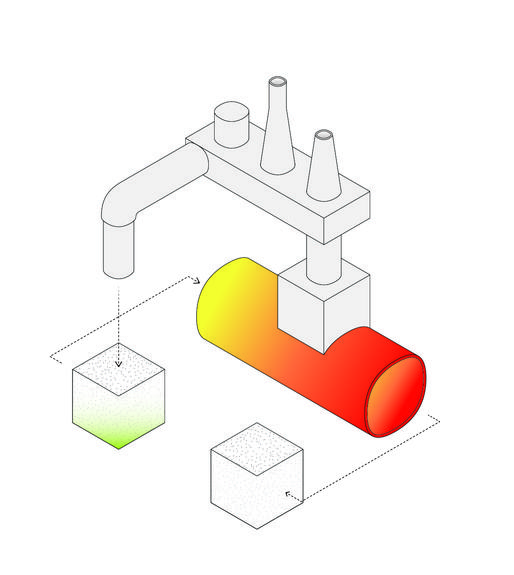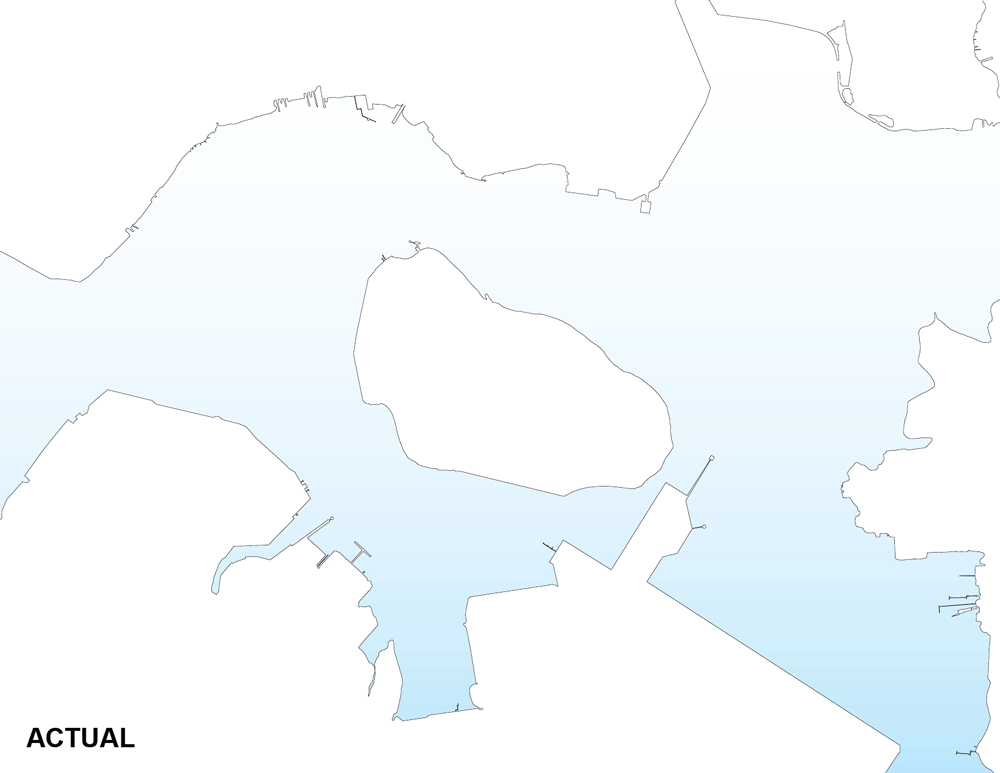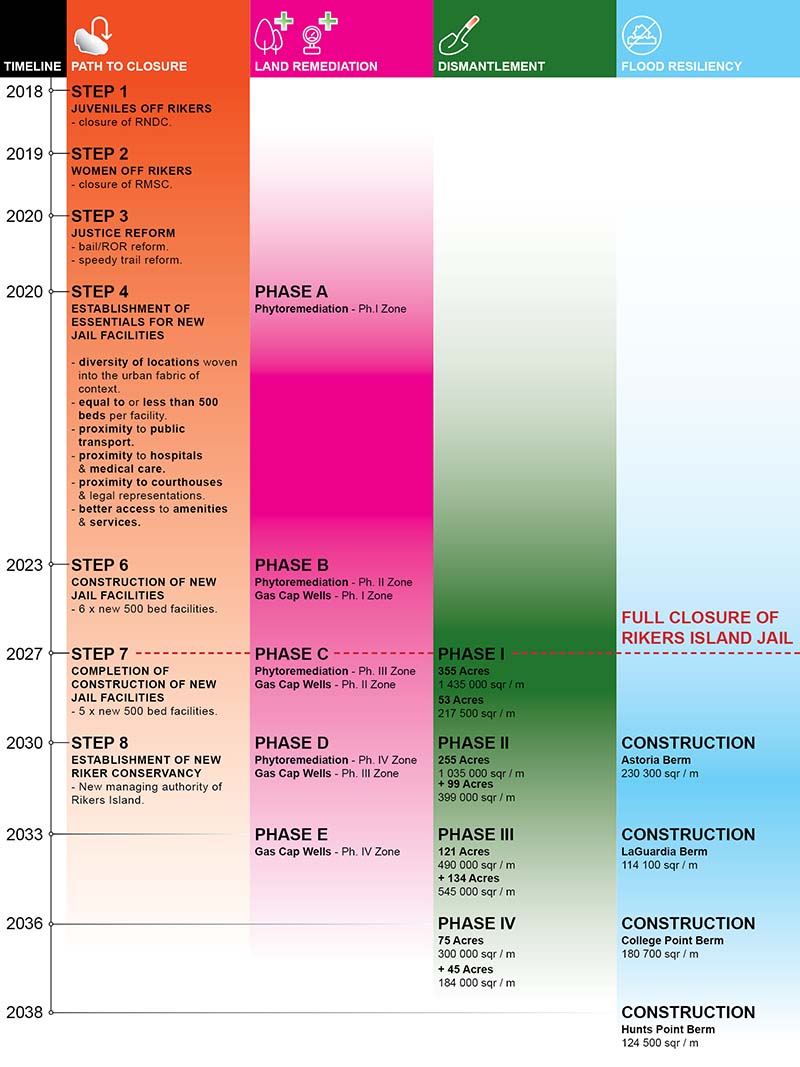The recent announcement of the closing of the Rikers Island jail has already raised questions about the future potential of the land itself, with redevelopment already mentioned. But what if Rikers Island, of which 83% is actually landfill, could be returned to its original, natural state as a means of combatting climate change and sea level rise, while also environmentally remediating an already polluted island? Could the remediation of the island also support the process of closing the jail?
This is precisely what Swiss/Australian architect Mark-Henry Decrausaz hopes to achieve with his proposal, New Rikers, developed as part of a studio in the fall of 2016 at Columbia University Graduate School of Architecture, Planning and Preservation, under the direction of Michelle Young, the founder of Untapped Cities who is a professor at the school.
The below text and visual images have been adapted from the website Decrausaz created as part of the class.
Could we envision Rikers Island as the location for new housing in New York? Perhaps Rikers Island could become a new home for industry, directly mirroring its immediate surroundings, serving clients such as the Hunts Point food distribution center, LaGuardia airport or the multiplus other local manufacturing and service businesses? What if the island were be transformed into an open space akin to Central Park or Brooklyn’s Prospect Park, a manicured pastoral green space for the local residents of the area and the population of the greater city?
Or perhaps it could be returned to its pristine condition before its history as an urban penitentiary object or its even earlier use as New York’s principal landfill?
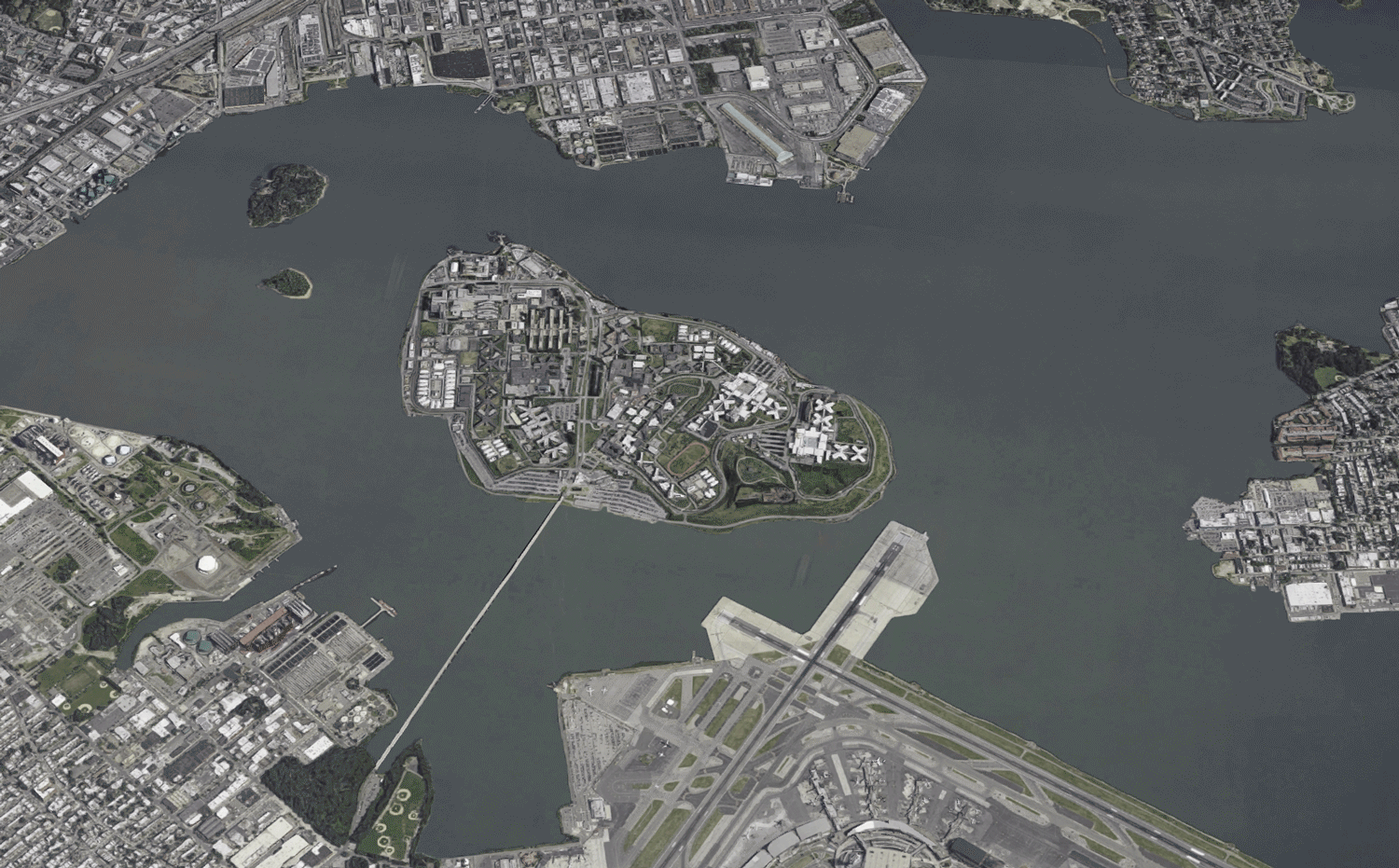 Turning Rikers Island back to its original state
Turning Rikers Island back to its original state
While all of these are possible, some are more probable than other, and some are preferable than the rest given the complex social, environment and urban conditions of Rikers Island.
This project serves to explore the question of a “New Rikers Island” and how to transform a troubled and increasingly problematic jail and underused territorial artifact in a design that can serve the local population and the city of New York while also addressing the issues around justice reform and how they intersect with architecture and urban design.
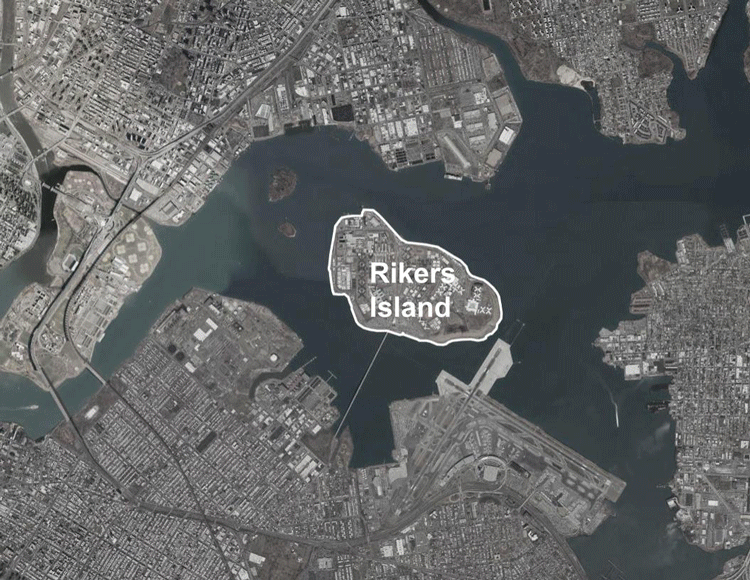 Localizing Rikers Island
Localizing Rikers Island
To further delve in the urban conditions of Rikers Island also requires a understanding of its history. The island was not always as we know it today and was in fact originally less than a fourth of its current size. How it grew to its current proportions comes from a well established urban tradition of New York city; landfill.
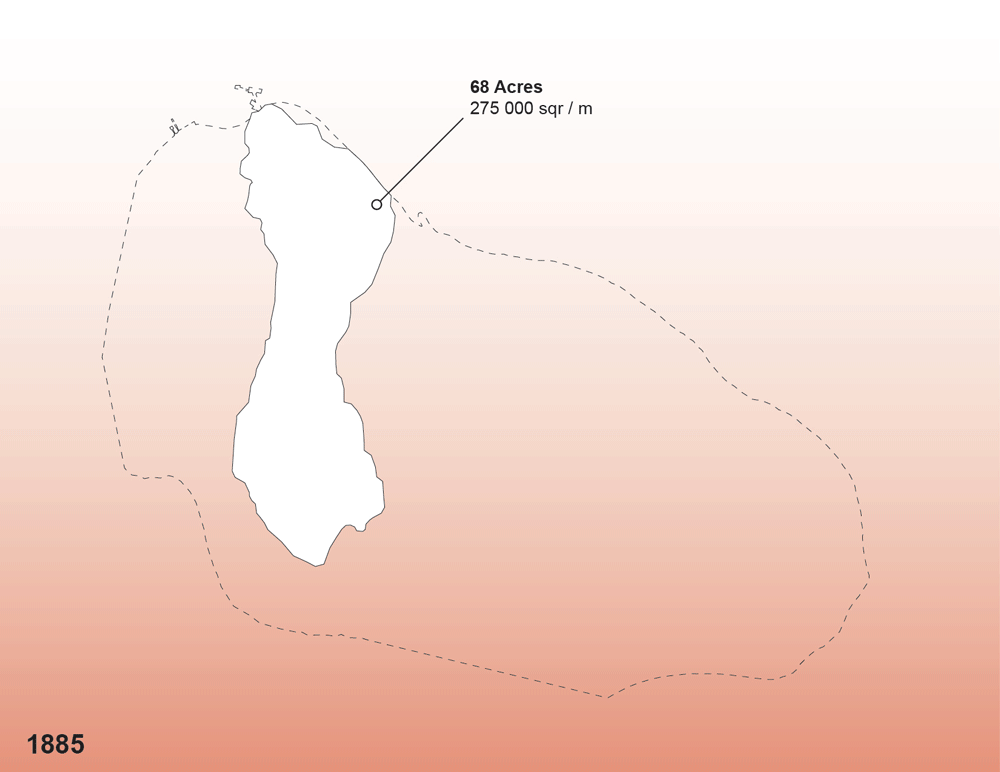
Rikers Island was reclaimed land via barge fed landfill operations and grew to it current size over the span of six decades. At one of the first mappings of Rikers in 1885, the island was 68 acres, previously to this it was settled by Dutch farmers, used as a camp during the American Civil war and was finally sold to the city of New York in 1884.
In 1888, the New York Times published the article: “To Build a Bigger Island,” espousing the “scheme includes the reclamation of a great deal of land belonging to Rikers Island and bought with it.” In 1907, a second article about this same process and its virtues, combined with the growing garbage problems of the city, prompted city officials to expand landfill operations on Rikers Island
In 1924, all barge-fed operations were consolidated from Hart Island and Cromwell Creek in the Bronx to Rikers Island and by 1932, the island had already tripled in size to 262 acres. In the same year Rikers Island first began to function as a jail, where inmates were used as labour to reclaim land and process the barge trash into a usable landmass.
In 1935, the House of Detention for Men (Rikers Island Jail’s first name) was completed. For nearly a decade inmates worked the landfill into an artificial island until 1943 when barge fill operations were moved from Rikers Island to the Great Kills Marsh on Staten Island. This was due in part to the increasing role Rikers Island was playing as New York primary jail and the island’s inability to manage the exponential rate of garbage produced by the city of New York. By 1950, the Rikers Island jail was in full operation on an island the size of 413 acres.
Environmental Conditions
Given the site’s history as a landfill, one of the foremost environmental challenges facing Rikers is the build-up and steady release of methane from the decomposing content beneath the soil of Rikers Island. The release of these pockets of gas can cause movement or shifting in the substrata of the ground, that in turn shears and damaged the structure of the jails buildings and has resulted in broken water mains and foundations.
The continuous methane leaks on Rikers island have been sited as a carcinogen in multiple class action lawsuits against the New York City Department of Corrections from former inmates and corrections officers alike. And has also been linked to an increased incidence of asthma amongst those on the island.
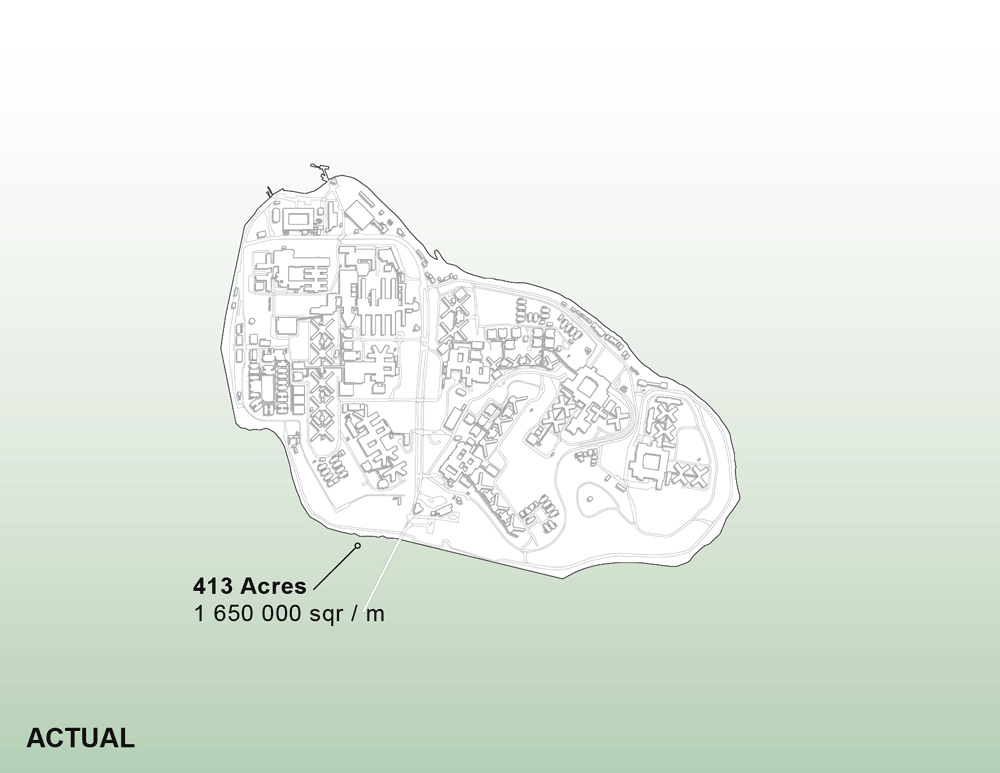
New Rikers Timeline
So how do these sequences of events ultimately line up? And what is the resulting timescale for the transformation of the Rikers Island jail into the New Rikers project?
Cost of Proposal
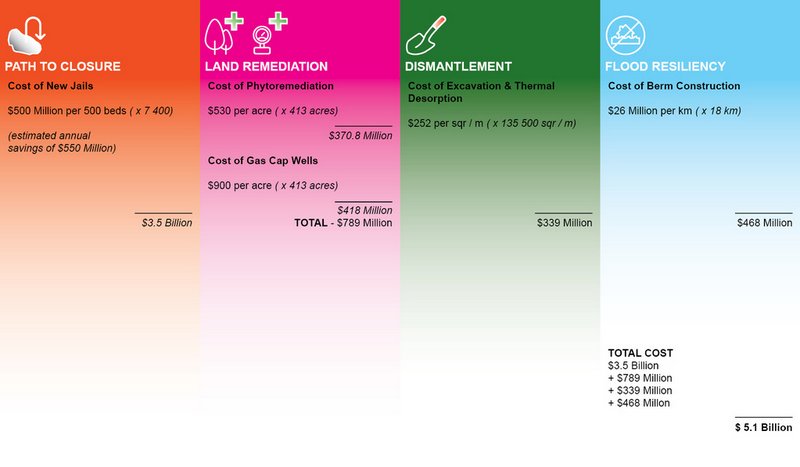
A project of this scale is undoubtedly expensive and requires a huge amount of capital to see it finalized over its 20 year timeline. But it is also worth noting what this $5.1 billion sum of expense is ‘buying’ so to speak.
Firstly the New Rikers proposal addresses the need to reevaluate the urban conditions of inmates populations and finds better, more localized alternative for housing on Rikers Island. While costly in the short term, will deliver savings of up to $550 million a year after completion, effectively paying for the whole project within 10 years, before it is even completed. Secondly it provides much needed flood protection for the local industries, without which risk thousands of job losses and equal billions of loss in annual revenue and property value. Finally, New Rikers is also a gesture offering an underserved populace green space and waterfront access up until now denied to them.
When bundled together; justice reform, flood resiliency and new public space combined allows the project to make a persuasive argument for its own cost, and while it may appear utopian, the New Rikers proposal aims to answer that fundamental design question we originally asked:
What is a possible future for Rikers Island that best serves relevant stakeholders, addresses the needs of New York and responds appropriately to its context.
Discover more on the New Rikers website.
Next, read about the Top 10 Secrets of Rikers Island.






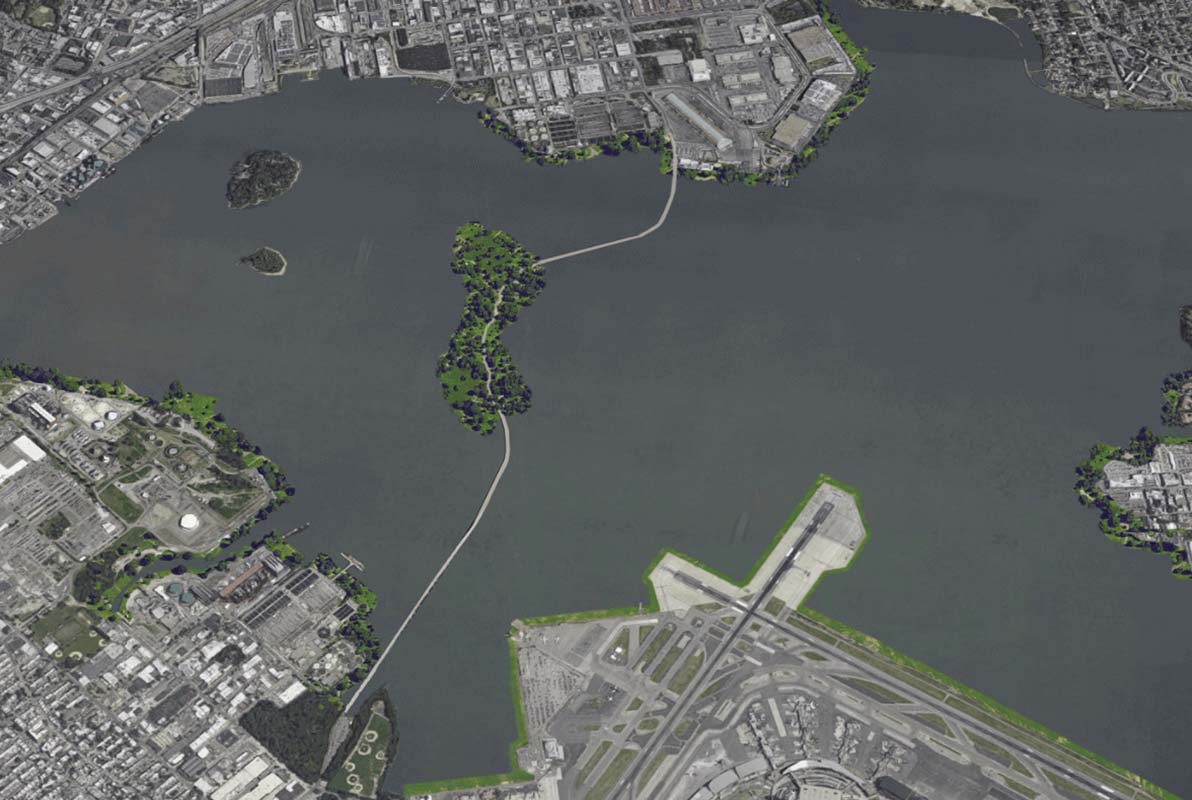
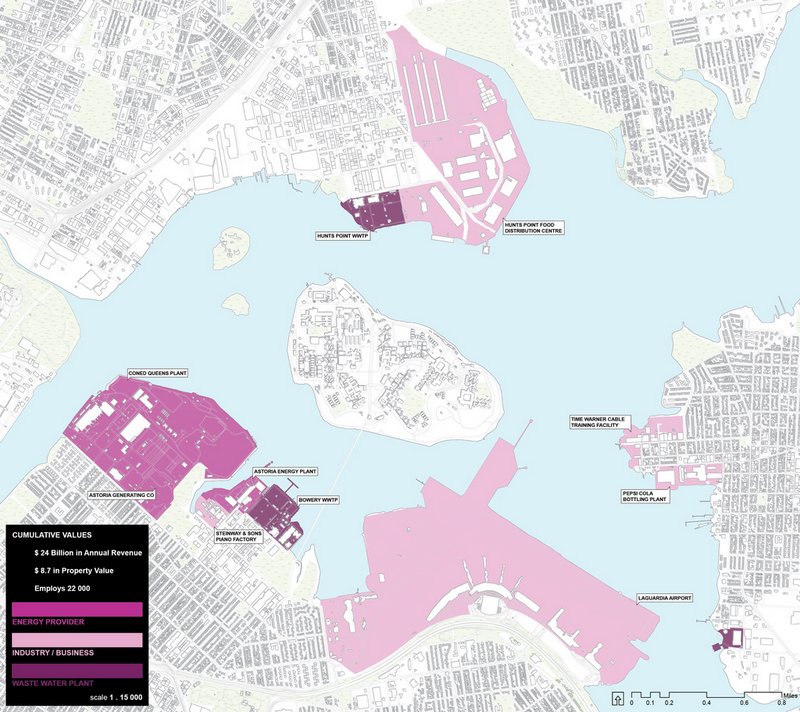 Industrial assets around Rikers Island
Industrial assets around Rikers Island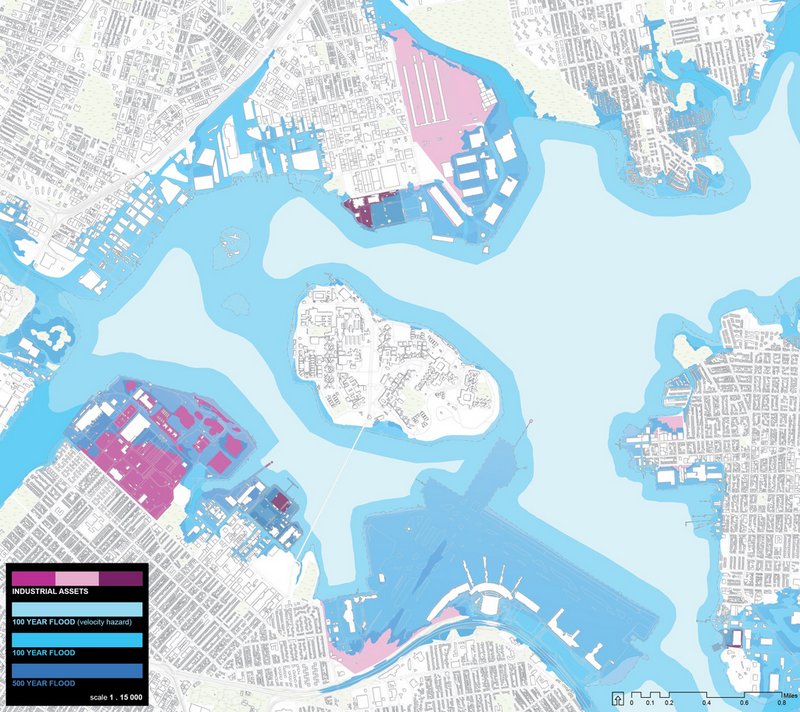 Flood map of Rikers Island and vicinity
Flood map of Rikers Island and vicinity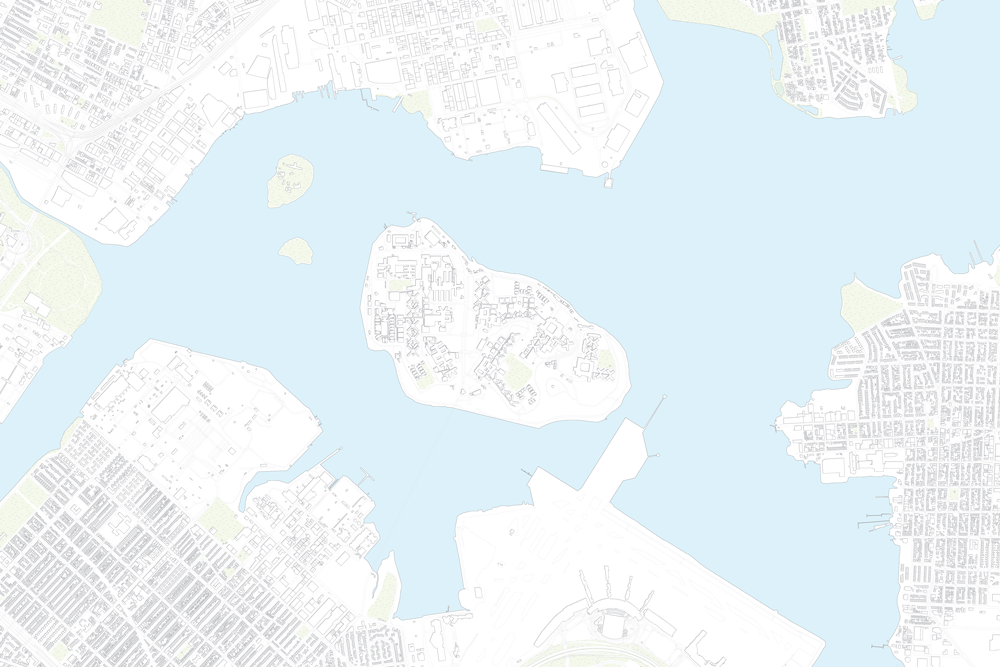 The dismantlement of Rikers Island
The dismantlement of Rikers Island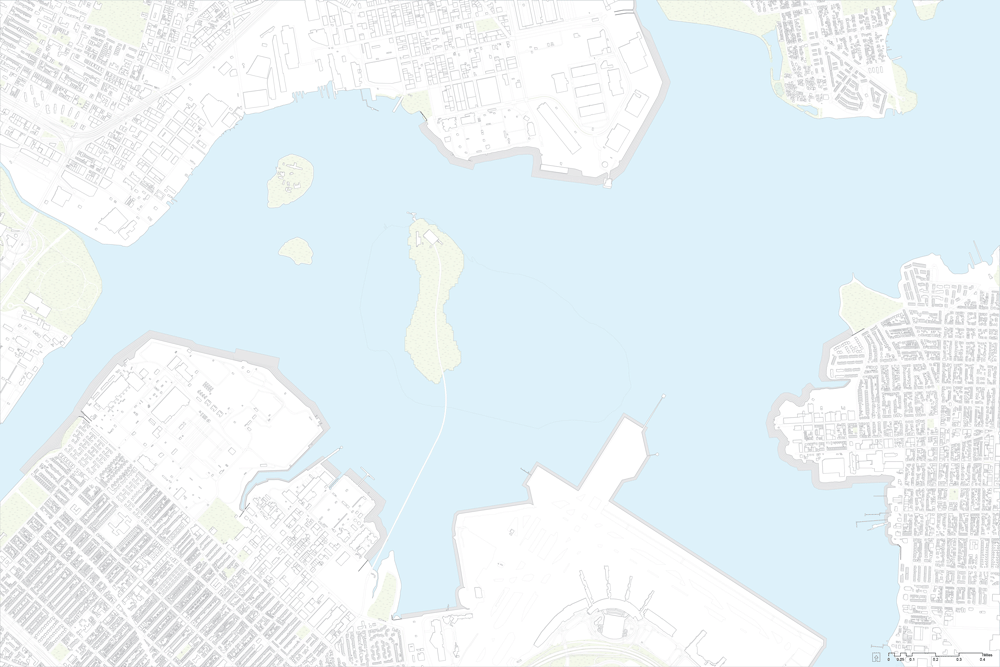 Flood protection in the form of green berms around
Flood protection in the form of green berms around 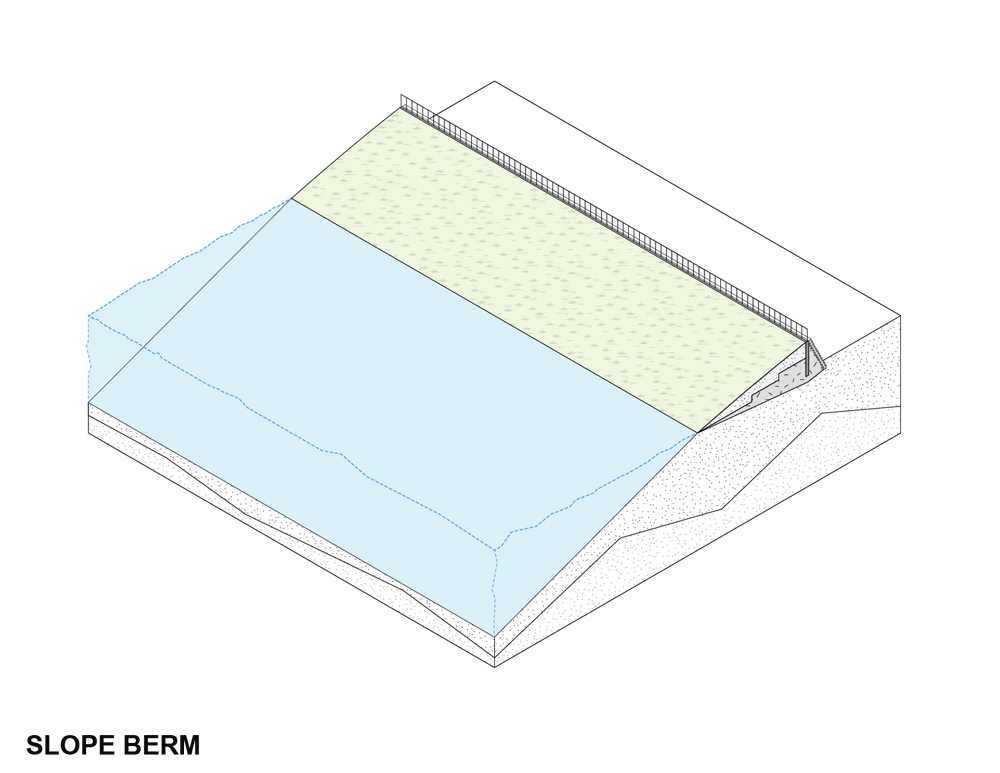
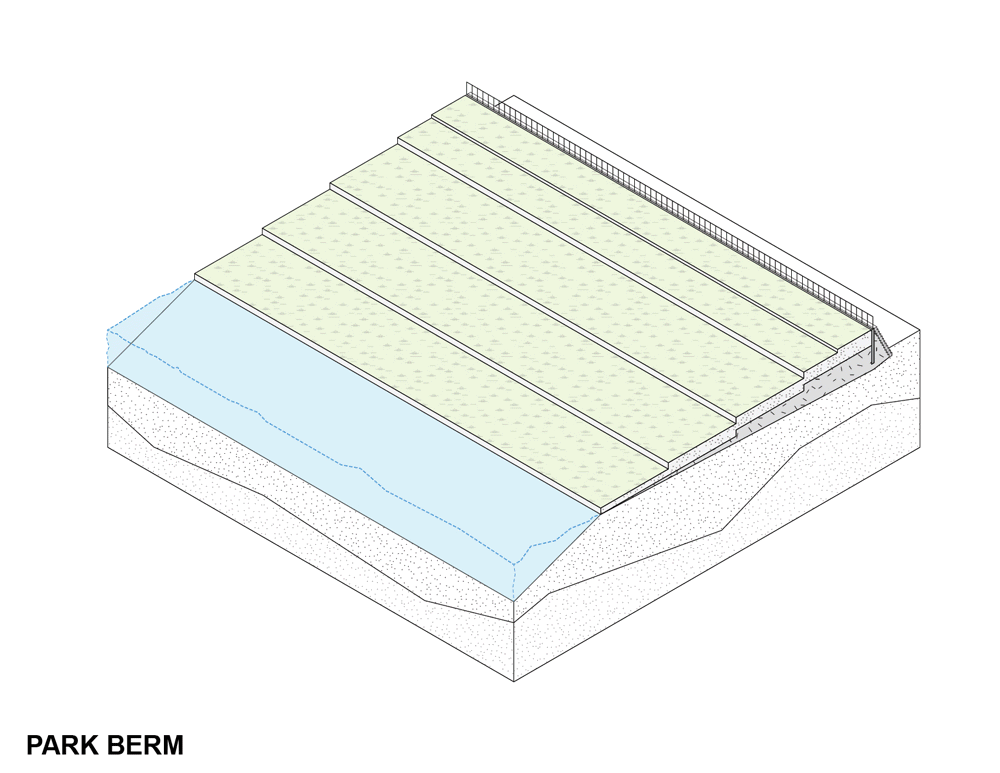
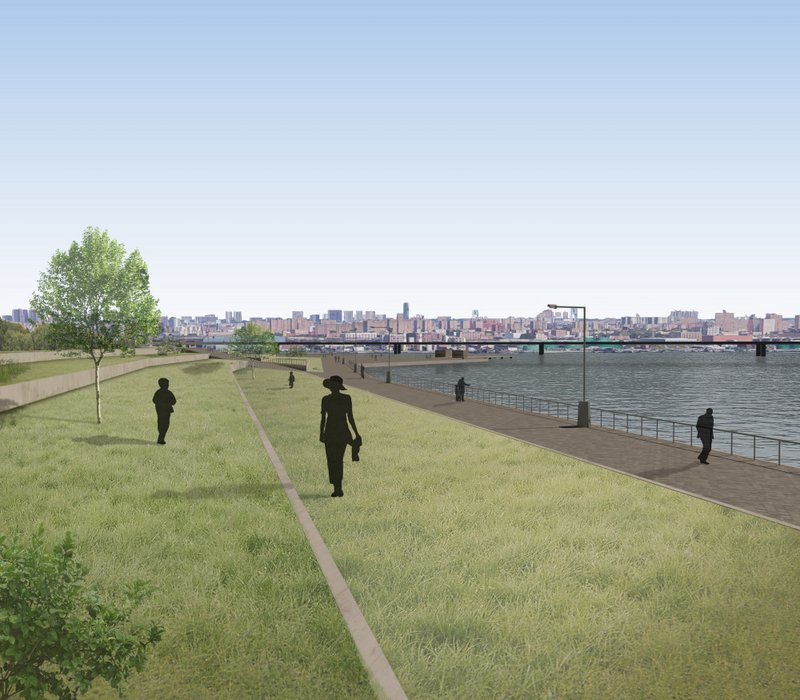
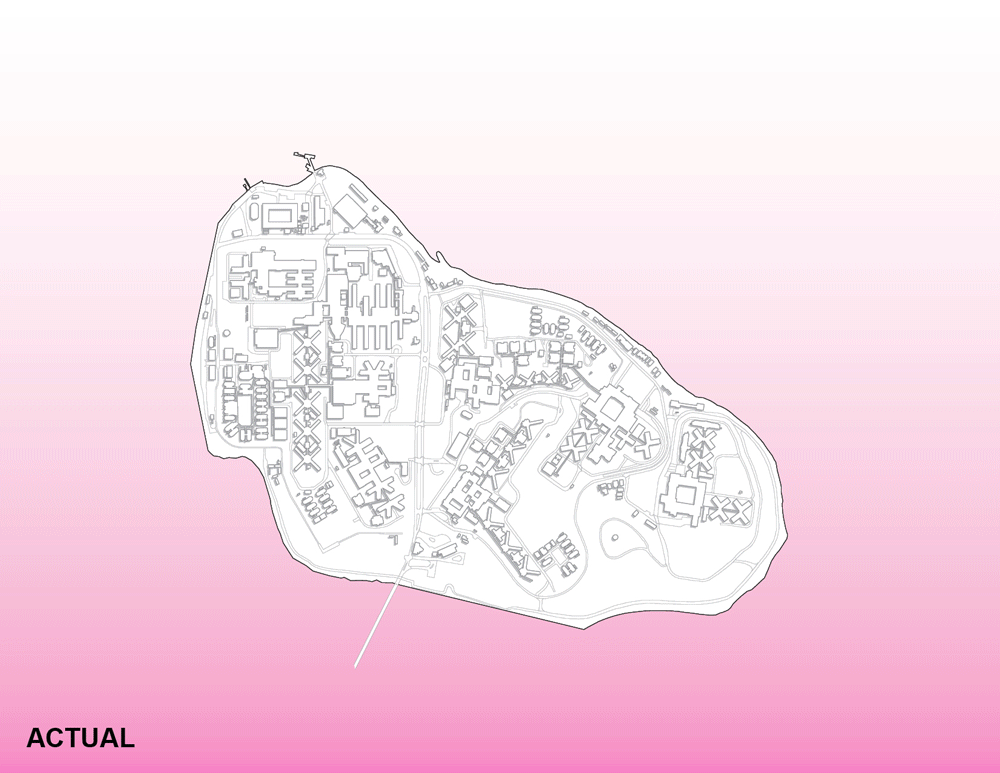 Sequencing of the land remediation on Rikers Island
Sequencing of the land remediation on Rikers Island